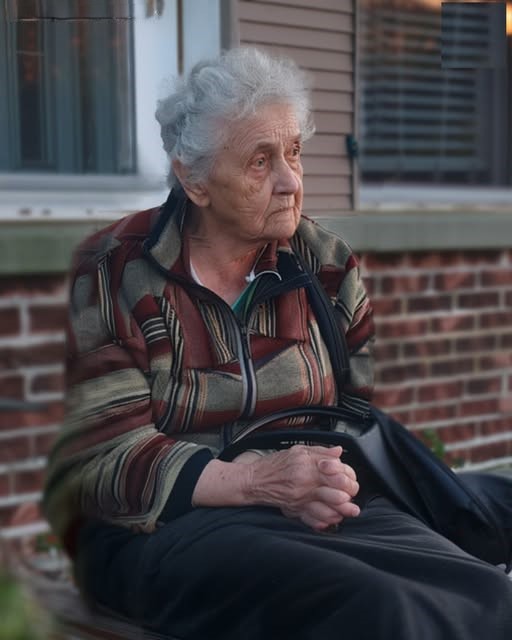“With you,” he said simply. “You’re the one who cares so much.”
The conversation left me unsettled, but I agreed. I prepared the guest room, determined to provide Grandma with a place where she felt safe and valued.
When I told her, she smiled softly, though I could see the emotion in her eyes. “Thank you, Rachel. You have a kind heart.”
“Grandma, you don’t have to thank me. This is your home now.”
The move happened quickly. Paul didn’t offer to help—he just stood in the doorway as we packed her belongings. “You’re doing the right thing,” he muttered, though it seemed like he was trying to convince himself.
On the drive home, the silence felt heavy. Then, just as we pulled into the driveway, Eleanor reached over and squeezed my hand. “I’ll be okay, Rachel.”
Inside, my children ran to greet her with open arms. “Great-Grandma, will you teach us to paint?” they asked eagerly, already pulling her toward an easel in the living room.
Eleanor’s smile, genuine and warm, was the first I had seen in weeks. “Of course, darlings. Let’s create something beautiful.”
With each passing day, she rediscovered her passion. My children became her biggest supporters, always excited to see her latest work. Encouraged by their enthusiasm, she began sharing her paintings online. Soon, people from all over started admiring her art, moved not just by her talent but by the emotion behind each piece.
Then, one evening, an email arrived. Her hands trembled as she read it. “Rachel, look at this. A gallery wants to give me a solo exhibition.”
“That’s amazing, Grandma! You deserve this,” I said, hugging her.
The following weeks were filled with excitement. Eleanor worked tirelessly, pouring her heart into new paintings. My kids helped frame the artwork and write descriptions for each piece. When the night of the exhibition arrived, the gallery was buzzing with energy. Guests admired her work, and by the end of the evening, nearly every painting had sold. She even received commission offers, securing her financial independence.
News of her success spread quickly. A few days later, Paul appeared at my doorstep. His usual confidence was gone, replaced by uncertainty.
“Rachel, can we talk?” he asked quietly.
“What do you want, Paul?” I asked, crossing my arms.
“I made a mistake,” he admitted, looking down. “I shouldn’t have asked Grandma to leave. I see that now.”
Eleanor stepped forward, her gaze steady. “It’s a little late for that, Paul,” she said gently. “Family isn’t about convenience.”
“I just… I want to make things right,” he said.
Eleanor shook her head. “You have to understand the value of people—not for what they provide, but for who they are.”
Paul stood there for a moment, as if hoping she might change her mind. But she didn’t. Finally, he nodded and turned away.
As the door closed behind him, Eleanor sighed and turned to me. “Rachel, I’m so grateful for you and the kids. You’ve shown me what true family means.”
Her story inspired many. People didn’t just come to see her paintings; they came to hear about the woman who had rebuilt her life with dignity and grace.
One evening, as we sat in the living room with the kids painting at her feet, I reflected on everything that had happened. “Grandma, your strength changed us all,” I said. “You taught us to cherish the people who truly matter.”
She smiled, her eyes twinkling. “It’s never too late to find your strength,” she said. “And it’s never too late to teach others what family truly means.”
Paul, meanwhile, was left to reflect on his choices. He had measured family in financial terms, and in doing so, he had lost something far more valuable.

